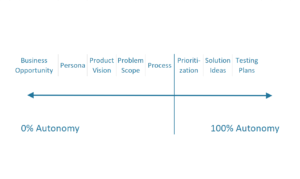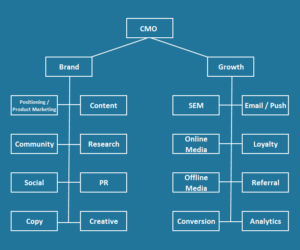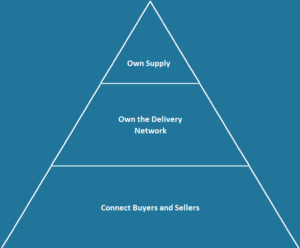When I started managing teams at Grubhub over a decade ago, I was pretty obsessed with high performance. I wanted my team to have very clear goals, remove any roadblocks they would face to being successful, and make a big impact on the success of the company. I was able to hire a strong team, and we got to work, 100xing the size of our customer base over four years. As part of this process, a lot of what I tried to do was reduce distractions for the team. Any time there was strategic misalignment or confusion at the top ranks of the company, I would hide that from the team so it didn’t affect their performance. In other words, I wouldn’t let confusion at the top level create confusion at their level.
As the team grew over time both in size and in scope, I started to see cracks in this strategy I didn’t immediately understand. The first symptom was people on my team saying that while they felt very supported by me and were growing in their skills and their career, they didn’t have much visibility in what other members of the team did or how their roles worked. So, I created a Friday meeting we called “Team Learn” where every week, one team member would deep dive on what they were working on so the rest of the team could learn more about it. Initially, these were topics like email marketing or Google Adwords, but we started expanding them to other topics the team wanted to learn about, like venture capital and emerging channels. This meeting was so successful other teams wanted to participate, so I eventually expanded the meeting to include other teams.
This didn’t solve the root problem though. As my team got more comfort or clarity in their feedback, I started to understand the root problem more. While I was shielding my team from any swirl related to top level strategic decisions or screw ups or whatever elsewhere in the company, I was not the only person they talked to at Grubhub. So, they would hear from peers about all of these other things going on I had deemed to be unimportant or distractions, and the fact that I didn’t ever mention them made it feel like I was hiding things from them. It made them feel as if they couldn’t handle that level of knowledge and weren’t being treated as senior as they should be.
So I shifted my approach. I made a commitment to share what was going on, but also contextualize it so as not to create doubt or swirl in their minds about what was going on at the company. We were definitely winning, after all. I moved from extreme editorial filtering to complete transparency, followed by contextualizing how this will all work out and why we win. When we hire great employees, the push to focus them and not distract them, while good, can easily be used as an excuse to not share hard things, and that creates a belief that the team can’t handle unresolved conflict, work through confusion, or understand strategic fog or even help lift it, and creates the perception that you as a leader are hiding things. It’s like hiring a bunch of strong engineers, and then only feeding them tickets of what they need to code through Jira because if we actually got them involved in deciding the problem, “they couldn’t possibly understand the business!” It doesn’t make a lot of sense when you think about it.
At Eventbrite, I have come to call this style transparent optimism. I’m going to give you all the context, the good, the bad, and the ugly, and explain how I think we come out on top. I trust my team with being able to handle all of that context and ultimately help us work through some of the thornier issues together. This is a style of communication that will not work with all cultures. Company cultures have to decide where they exist on a spectrum of open vs. closed in their communication. If I tried to apply this style at Apple, for example, I would quickly be fired for sharing things they do not want shared. So I bias toward cultures that have a comfort with this level of transparency, which is not all companies! Many companies would not even let me write a blog like this while working there. At Eventbrite now, I host quarterly AMAs with the team, the CEO does them twice a month, and both the CTO and I wrote monthly internal blog posts on what is on our mind.
Obviously, I am biased, and communication styles come with pros and cons. With transparent optimism, I create risks of more interpretations of what is happening, external leaks, and it just requires me to communicate a lot more. But ultimately, I think it creates a default trust and default respect with the team, and helps them contribute more to the success of the company.
Currently listening to Scurlage by µ-Ziq.



